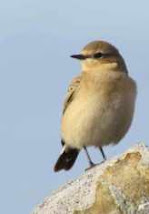Monday 12 July 2010
Grass, glorious grass....
Let’s not underestimate its value, urge The Wildlife Trusts in their latest press release saying.....
"Whether it’s a rare patch of culm grassland in the south west, or a strip of road verge in the east midlands, a vast array of wildlife relies on grasslands to survive, according to The Wildlife Trusts.
"Many of us may not realise how precious or rare some UK grasslands are, or be aware of the benefits they can bring to people. So, two of the most innovative grassland conservation projects in the UK are explored in the latest issue of Natural World, The Wildlife Trusts’ membership magazine.
"Devon Wildlife Trust’s ‘Working Wetlands Project’ brings together farmers, government agencies and water companies to help restore one of the most wildlife-rich habitats in the UK, culm grassland. Over recent decades, 90 percent of this vital haven for species such as the marsh fritillary butterfly has been lost.
By running training workshops on grazing and cutting techniques, and linking together fragmented patches of culm, Devon Wildlife Trust is seeing considerable success, with 700 hectares of culm bought into favourable condition (supporting the variety of life expected from this type of habitat), since the project began in 2005. On one site alone, marsh fritillary numbers increased six-fold this season. Not only does this restoration benefit wildlife, it should help prevent flooding, as the wet grasslands will absorb water from upstream in times of excessive rainfall.
‘Life on the Verge’ is featured too. A joint project by Lincolnshire Wildlife Trust and Leicestershire and Rutland Wildlife Trusts, it draws attention to an unexpected habitat throughout the three counties – flower-rich road verges. With the help of hundreds of volunteers, the Trusts are surveying 1,300 miles of road verges, some of which are remaining fragments of limestone grassland. Sometimes described as the UK’s rainforest, limestone grassland can hold up to 40 plant species per square metre.
"People pass road verges every day without so much as a second glance. Yet on them, The Wildlife Trusts have discovered new sites for rare wildflowers like squinancywort and man orchid.
"Paul Wilkinson, head of Living Landscape for The Wildlife Trusts, said: “Everywhere we look, in urban and rural areas, there are spaces with potential to become wildlife-rich habitats. The Life on the Verge project is a superb demonstration of this – who would have thought a strip of grass beside the road might be home to some of our rarest wildflowers? Of course, these green spaces have many different owners and so we aim to illustrate to them why it’s so beneficial to encourage wildlife into their patch.
“Devon Wildlife Trust has done a remarkable job of this with their Working Wetlands Project, helping farmers to develop long-term skills for the future. These skills will benefit wildlife and also local people in the areas through, among other things, flood prevention.
“The Wildlife Trusts encourage everyone to take a closer look at grasslands and think about what might live there now, and what could live there if it was managed in a different way. Whether taking up wildlife gardening, surveying a strip of road verge or bringing cattle on for conservation grazing, we can all take action to help create A Living Landscape.”
Subscribe to:
Post Comments (Atom)












No comments:
Post a Comment